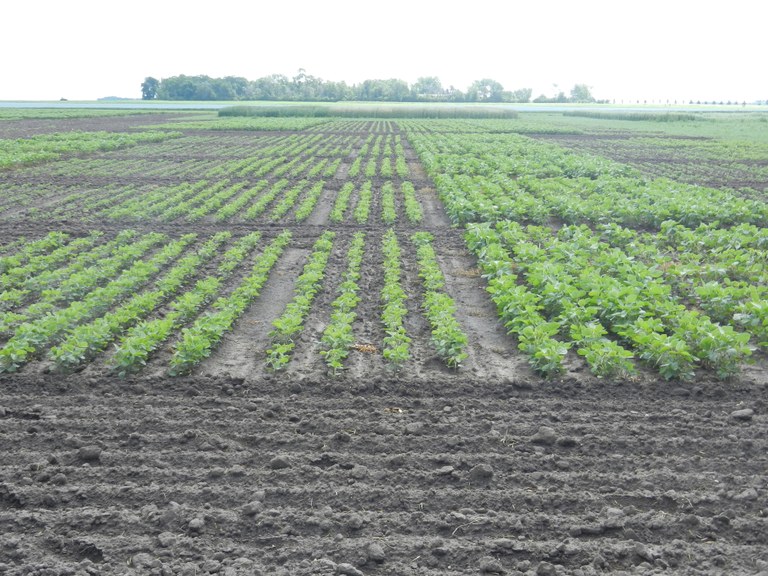Soybean Population and Planting Date Effects
Soybeans are known to compensate well for stand loss in the field. This is one reason why there is such a wide range of plant populations that are considered acceptable, and why there are differing views about when to replant a soybean field after stand loss has occurred. Many studies have been conducted at NDSU recently to quantify planting date or plant population effects on yield. In 2014, a study was conducted to consider evaluate both factors. The goal of this study was not to justify reduced populations as a whole, but provide comparisons to make more informed decisions regarding replanting scenarios.
Three planting dates were used (May 23, June 5 and June 23) and five target populations, ranging from 80,000 to 200,000, were planted at each date. Soybean compensation was measured by branch number and seed number per plant. Across the planting dates, the branch number increased by 3-4 per plant as the plant population approached 80,000 and the seeds per plant doubled over that same range. This resulted in a 57 (at 200,000) compared to 41 (at 80,000) bu/a yield. In 2014 the yield loss by waiting until June 5 was 64% compared to the May 23 date. The difference between June 5 and June 23 was less. Even though there were two weeks between each planting date, soybean maturity was only 6 days different at each planting date as well.
The real power of the study though is the ability to compare the planting date and population together. Here is a short chart to highlight the yield differences noted between the first two planting dates.
This growing season could be considered a bit atypical (as usual). You’ll note that the lowest population in the first planting date was roughly the same as the best population at the next planting date. I believe this result was due to the very warm weather that occurred at the end of May that the two later planting dates missed during the fairly cool summer conditions.
Partial sponsorship for this study was from the North Dakota Soybean Council. More work will continue next year to develop more long-term patterns in soybean yield.
Mike Ostlie
Agronomist



